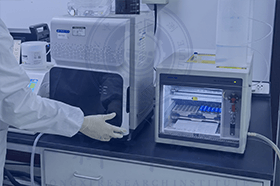检测项目(部分)
含水率(标准法)
表观密度(标准法)
压碎值
石粉含量
表观密度(简易法)
云母含量
泥块含量
贝壳含量
堆积密度
颗粒级配和细度模数
表观密度(坍落筒法)
含泥量(标准法)
毛体积密度
表干密度
压碎指标
含水率
含泥量
紧密密度
氯离子(氯化物)含量
有机物含量
含水率(快速法)
碱活性
表干相对密度
吸水率
表观相对密度
坚固性
碱骨料反应(碱-硅酸反应砂浆长度法)
检测样品(部分)
砂(细集料
细集料
检测标准(部分)
1.1 This test method covers procedures for an approximate determination of the presence of injurious organic impurities in fine aggregates that are to be used in hydraulic cement mortar or concrete.
1.2 Inch-pound units are to be regarded as standard.
1.3 This standard does not purport to address all of the safety problems if any associated with its use. It is the responsibility of the user of this standard to establish appropriate safety and health practices and determine the applicability of regulatory limitations prior to use.
1.1 This test method covers the determination of the average density of a quantity of fine aggregate particles (not including the volume of voids between the particles) the relative density (specific gravity) and the absorption of the fine aggregate. Depending on the procedure used the density in kg/m3 (lb/ft3) is expressed as oven-dry (OD) saturated-surface-dry (SSD) or as apparent density. Likewise relative density (specific gravity) a dimensionless quality is expressed as OD SSD or as apparent relative density (apparent specific gravity). The OD density and OD relative density are determined after drying the aggregate. The SSD density SSD relative density and absorption are determined after soaking the aggregate in water for a prescribed duration.
1.2 This test method is used to determine the density of the essentially solid portion of a large number of aggregate particles and provides an average value representing the sample. Distinction is made between the density of aggregate particles as determined by this test method and the bulk density of aggregates as determined by Test Method C 29/C 29M which includes the volume of voids between the particles of aggregates.
1.3 This test method is not intended to be used for lightweight aggregates.
1.4 The values stated in SI units are to be regarded as the standard for conducting the tests. The test results for density shall be reported in either SI units or inch-pound units as appropriate for the use to be made of the results.
1.5 The text of this test method references notes and footnotes which provide explanatory material. These notes and footnotes (excluding those in tables and figures) shall not be considered as requirements of this test method.
1.6 This standard does not purport to address all of the safety concerns associated with its use. It is the responsibility of the user of this standard to establish appropriate safety and health practices and determine the applicability of regulatory limitations prior to use.
1.1 This test method covers the determination of the average density of a quantity of fine aggregate particles (not including the volume of voids between the particles) as appropriate for the use to be made of the results.
1.5 The text of this test method references notes and footnotes which provide explanatory material. These notes and footnotes (excluding those in tables and figures) shall not be considered as requirements of this test method.
This standard does not purport to address all of the safety concerns associated with its use. It is the responsibility of the user of this standard to establish appropriate safety and health practices and determine the applicability of regulatory limitations prior to use.
1.1 This specification covers fine aggregate for use in bituminous paving mixtures.
1.2 This specification is intended to describe material from a single source. When material from two or more sources is to be blended to produce a grading to meet requirements in other specifications for bituminous paving mixtures the grading requirements of Table 1 of this specification are not applicable.
Note 18212; When obtaining materials from two or more sources that are to be blended to produce the final mix it is recommended that the specifying or the ordering agency specify the alternative gradings and blend ratios to be supplied.
1.3 The values stated in SI units are to be regarded as standard. Inch-pound units shown in parentheses are for information only.
1.4 The text of this standard references notes and footnotes which provide explanatory material. These notes and footnotes (excluding those in tables and figures) shall not be considered as requirements of the standard.
1.1 This specification covers fine aggregate for use in bituminous paving mixtures.
1.2 This specification is intended to describe material from a single source. When material from two or more sources is to be blended to produce a grading to meet requirements as described in Specification D3515 or other specifications for bituminous paving mixtures the grading requirements of Table 1 of this specification are not applicable.
Note 18212;When obtaining materials from two or more sources that are to be blended to produce the final mix it is recommended that the specifying or the ordering agency specify the alternative gradings and blend ratios to be supplied.
1.3 The values stated in SI units are to be regarded as standard. Inch-pound units are for information only.
1.4 The text of this standard references notes and footnotes which provide explanatory material. These notes and footnotes (excluding those in tables and figures) shall not be considered as requirements of the standard.
1.1 These test methods describe the determination of the loose uncompacted void content of a sample of fine aggregate. When measured on any aggregate of a known grading void content provides an indication of that aggregate''s angularity sphericity and surface texture compared with other fine aggregates tested in the same grading. When void content is measured on an as-received fine-aggregate grading it can be an indicator of the effect of the fine aggregate on the workability of a mixture in which it may be used.
1.2 Three procedures are included for the measurement of void content. Two use graded fine aggregate (standard grading or as-received grading) and the other uses several individual size fractions for void content determinations:
1.2.1 Standard Graded Sample (Test Method A) -This test method uses a standard fine aggregate grading that is obtained by combining individual sieve fractions from a typical fine aggregate sieve analysis. See the section on Preparation of Test Samples for the grading.
1.2.2 Individual Size Fractions (Test Method B) -This test method uses each of three fine aggregate size fractions: ( ) 2.36 mm (No. 8) to 1.18 mm (No. 16); ( ) 1.18 mm (No. 16) to 600 [mu]m (No. 30); and ( ) 600 [mu]m (No. 30) to 300 [mu]m (No. 50). For this test method each size is tested separately.
1.2.3 As-Received Grading (Test Method C) -This test method uses that portion of the fine aggregate finer than a 4.75-mm (No. 4) sieve.
1.2.4 See the section on Significance and Use for guidance on the method to be used.
1.3 The values stated in SI units shall be regarded as the standard.
1.4 This standard does not purport to address all of the safety problems associated with its use. It is the responsibility of the user of this standard to establish appropriate safety and health practices and determine the applicability of regulatory limitations prior to use.
This test method assigns an empirical value to the relative amount fineness and character of claylike material present in the test specimen.
A minimum sand equivalent value may be specified to limit the permissible quantity of claylike fines in an aggregate.
This test method provides a rapid field method for determining changes in the quality of aggregates during production or placement.
1.1 This test method is intended to serve as a rapid field-correlation test. The purpose of this test method is to indicate under standard conditions the relative proportions of clay-like or plastic fines and dust in granular soils and fine aggregates that pass the 4.75-mm (No. 4) sieve. The term "sand equivalent" expresses the concept that most granular soils and fine aggregates are mixtures of desirable coarse particles sand and generally undesirable clay or plastic fines and dust.
Note 18212;Some agencies perform the test on material with a top size smaller than the 4.75-mm (No. 4) sieve. This is done to avoid trapping the clay-like or plastic fines and dust below flaky shaped 4.75 to 2.36 mm (No. 4 to 8) sized particles. Testing smaller top sized material may lower the numerical results of the test.
1.2 Units of Measurement
1.2.1 The values stated in SI units are to be regarded as the standard with the exception of the dimensions of the special sand equivalent test apparatus described in in which the the inch dimensions are standard. Values in parentheses are for information only.
1.3 This standard does not purport to address all of the safety concerns associated with its use. It is the responsibility of the user of this standard to establish appropriate safety and health practices and determine the applicability of regulatory limitations prior to use.
Bulk relative density (specific gravity) is the characteristic generally used for calculation of the volume occupied by the aggregate in various mixtures containing aggregate including Portland cement concrete bituminous concrete and other mixtures that are proportioned or analyzed on an absolute volume basis. Bulk relative density (specific gravity) is used in the computation of voids in aggregate in C 1252
Apparent relative density (specific gravity) pertains to the relative density of the solid material making up the constituent particles not including the pore space within the nbsp;nbsp;nbsp;particles that is accessible to water. This value is not widely used in construction nbsp;nbsp;nbsp;aggregate technology.
Water absorption values are used to calculate the change in the mass of an nbsp;nbsp;nbsp;aggregate due to water absorbed in the pore spaces within the constituent nbsp;nbsp;nbsp;particles compared to the dry condition when it is deemed that the aggregate nbsp;nbsp;nbsp;has been in contact with water long enough to satisfy most of the absorption nbsp;nbsp;nbsp;potential. The laboratory standard for absorption is that obtained after nbsp;nbsp;nbsp;submerging dry aggregate for approximately 24 hours in water. Aggregates nbsp;nbsp;nbsp;mined from below the water table may have a higher absorption when used if not allowed to dry. Conversely some aggregates when used may contain an nbsp;nbsp;nbsp;amount of absorbed moisture less than the 24 hours soaked condition: For an aggregate that has been in contact with water and that had free moisture on the nbsp;nbsp;nbsp;particle surface the percentage of free moisture can be determined by deducting nbsp;nbsp;nbsp;the absorption from the total moisture content determined according to C 566
1.1 This test method covers the determination of the relative density (specific gravity) and absorption of fine aggregates.
1.2 The values stated in SI units are to be regarded as the standard.
1.3 This standard does not purport to address all of the safety concerns associated with its use. It is the responsibility of the user of this standard to establish appropriate safety and health practices and determine the applicability of regulatory limitations prior to use.
The Micro-Deval abrasion test is a test of fine aggregate to determine abrasion loss in the presence of water and an abrasive charge. Many aggregates are more susceptible to abrasion when wet than dry and the use of water in this test incorporates this reduction in resistance to degradation. The test results are helpful in evaluating the toughness/abrasion resistance of fine aggregate subject to abrasion when adequate information is not available from service records. This test is suitable for measuring the amount of weak soft material such as shale or shaley carbonate in fine aggregate. Materials that give a low loss in this test are unlikely to exhibit significant degradation during handling mixing or placing. There is a relationship between drying shrinkage of cement mortar and Micro-Deval abrasion loss of fine aggregate with higher loss materials resulting in higher drying shrinkage. Descriptions of the development of the test and the relationship with other properties have been published.
The Micro-Deval abrasion test on fine aggregate is useful for detecting changes in properties of aggregate produced from an aggregate source as part of a quality control or quality assurance process.
The Micro-Deval abrasion test on fine aggregate in contrast to the version on coarse aggregate has a significant correlation with the Magnesium Sulfate soundness loss of fine aggregate. The Micro-Deval test on fine aggregate has better precision than the sulfate soundness test is quicker and may be used in place of that test. Advice on specific values for selection of aggregate will be found in the appendix.
1.1 This test method covers a procedure for testing fine aggregate for resistance to abrasion using the Micro-Deval apparatus.
1.2 The values stated in SI units are to be regarded as the standard.
1.3 The text of this method references notes and footnotes which provide explanatory material. These notes and footnotes (excluding those in tables and figures) shall not be considered as requirements of the test method.
1.4 This standard does not purport to address all of the safety concerns associated with its use. It is the responsibility of the user of this standard to establish appropriate safety and health practices and determine the applicability of regulatory limitations prior to use.
This test method is of significance in making a final determination of the acceptability of fine aggregates with respect to the requirements of Specification C33 concerning organic impurities.
This test method is applicable to those samples which when tested in accordance with Test Method C40 have produced a supernatant liquid with a color darker than standard color plate No. 3 or color solution.
Many specifications provide for the acceptance of fine aggregate producing a darker color in the Test Method C40 test when testing by this test method indicates the strength of the mortar cubes prepared with the unwashed fine aggregate is comparable to the strength of mortar cubes made with the washed fine aggregate.
1.1 This test method covers the determination of the effect on mortar strength of the organic impurities in fine aggregate whose presence is indicated using Test Method C40. Comparison is made between compressive strengths of mortar made with washed and unwashed fine aggregate.
1.2 The values stated in either SI units or inch-pound units are to be regarded separately as standard. The values stated in each system may not be exact equivalents; therefore each system shall be used independently of the other. Combining values from the two systems may result in non-conformance with the standard. Some values have only SI units because the inch-pound equivalents are not used in the practice.
Note 18212;Sieve size is identified by its standard designation in Specification E11. The alternative designation given in parentheses is for information only and does not represent a different standard sieve size
1.3 This standard does not purport to address all of the safety concerns associated with its use. It is the responsibility of the user of this standard to establish appropriate safety and health practices and determine the applicability of regulatory limitations prior to use.(Warning8212;Fresh hydraulic cementitous mixtures are caustic and may cause chemical burns to exposed skin and tissue upon prolonged exposure.)
This test method is not widely used. However it is a convenient procedure for field or plant determination of moisture content of fine aggregate if specific gravity values are known and if drying facilities are not available. It can be used to adjust the aggregate mass for moisture content and to determine surface moisture contribution to mixing water in portland cement concrete.
The accuracy of the test method depends upon accurate information on the bulk specific gravity of the material in a saturated surface-dry condition.
1.1 This test method covers field determination of the amount of surface moisture in fine aggregate by displacement in water.
This standard does not purport to address all of the safety concerns associated with its use. It is the responsibility of the user of this standard to establish appropriate safety and health practices and determine the applicability of regulatory limitations prior to use.
1.2 The values stated in SI units are to be regarded as the standard. The values in parentheses are provided for information purposes only.
This test method is used primarily to determine the grading of materials proposed for use as aggregates or being used as aggregates. The results are used to determine compliance of the particle size distribution with applicable specification requirements and to provide necessary data for control of the production of various aggregate products and mixtures containing aggregates. The data may also be useful in developing relationships concerning porosity and packing.
Accurate determination of material finer than the 75-x03BC;m (No. 200) sieve cannot be achieved by use of this test method alone. Test Method C 117
Refer to methods of sampling and testing in Specification C 637
1.1 This test method covers the determination of the particle size distribution of fine and coarse aggregates by sieving.
1.2 Some specifications for aggregates which reference this test method contain grading requirements including both coarse and fine fractions. Instructions are included for sieve analysis of such aggregates.
1.3 The values stated in SI units are to be regarded as the standard. The values in parentheses are provided for information purposes only. Specification E 11 designates the size of sieve frames with inch units as standard but in this test method the frame size is designated in SI units exactly equivalent to the inch units.
1.4 This standard does not purport to address all of the safety concerns

检测资质(部分)










检测优势
检测实验室(部分)



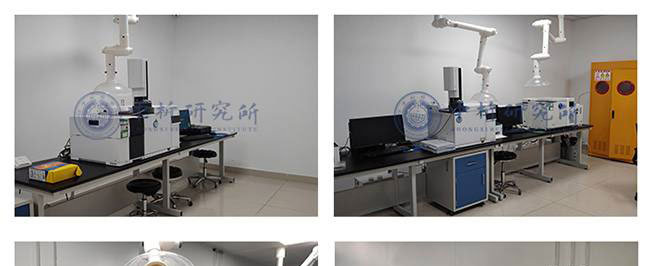
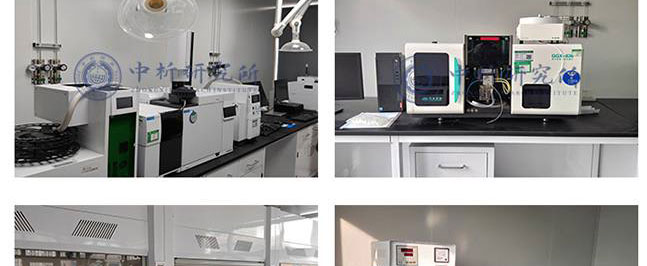
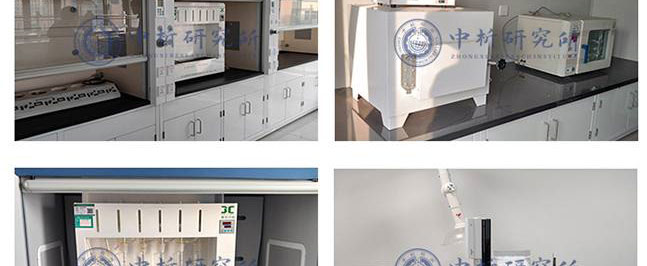
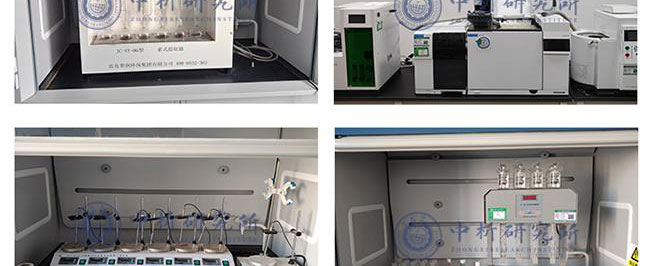
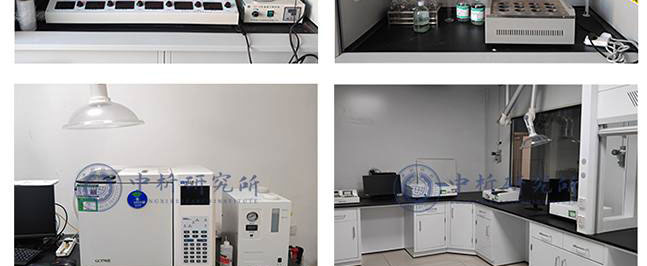
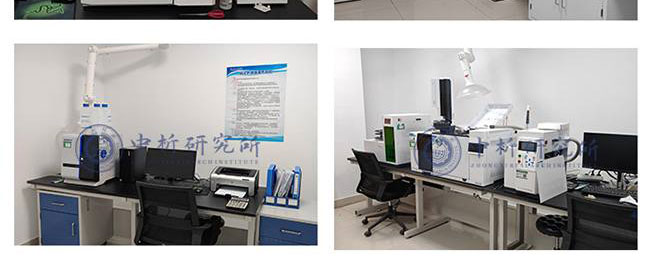
合作客户(部分)





检测报告作用
1、可以帮助生产商识别产品的潜在问题或缺陷,并及时改进生产工艺,保障产品的品质和安全性。
2、可以为生产商提供科学的数据,证明其产品符合国际、国家和地区相关标准和规定,从而增强产品的市场竞争力。
3、可以评估产品的质量和安全性,确保产品能够达到预期效果,同时减少潜在的健康和安全风险。
4、可以帮助生产商构建品牌形象,提高品牌信誉度,并促进产品的销售和市场推广。
5、可以确定性能和特性以及元素,例如力学性能、化学性质、物理性能、热学性能等,从而为产品设计、制造和使用提供参考。
6、可以评估产品是否含有有毒有害成分,以及是否符合环保要求,从而保障产品的安全性。
检测流程
1、中析研究所接受客户委托,为客户提供检测服务
2、客户可选择寄送样品或由我们的工程师进行采样,以确保样品的准确性和可靠性。
3、我们的工程师会对样品进行初步评估,并提供报价,以便客户了解检测成本。
4、双方将就检测项目进行详细沟通,并签署保密协议,以保证客户信息的保密性。在此基础上,我们将进行测试试验.
5、在检测过程中,我们将与客户进行密切沟通,以便随时调整测试方案,确保测试进度。
6、试验测试通常在7-15个工作日内完成,具体时间根据样品的类型和数量而定。
7、出具检测样品报告,以便客户了解测试结果和检测数据,为客户提供有力的支持和帮助。
以上为细集料检测的检测内容,如需更多内容以及服务请联系在线工程师。








